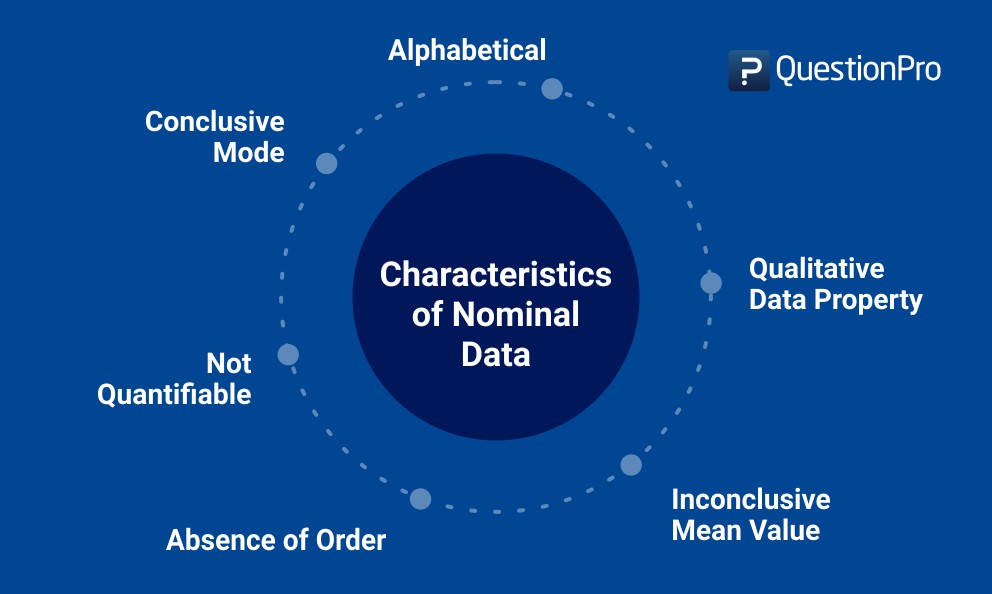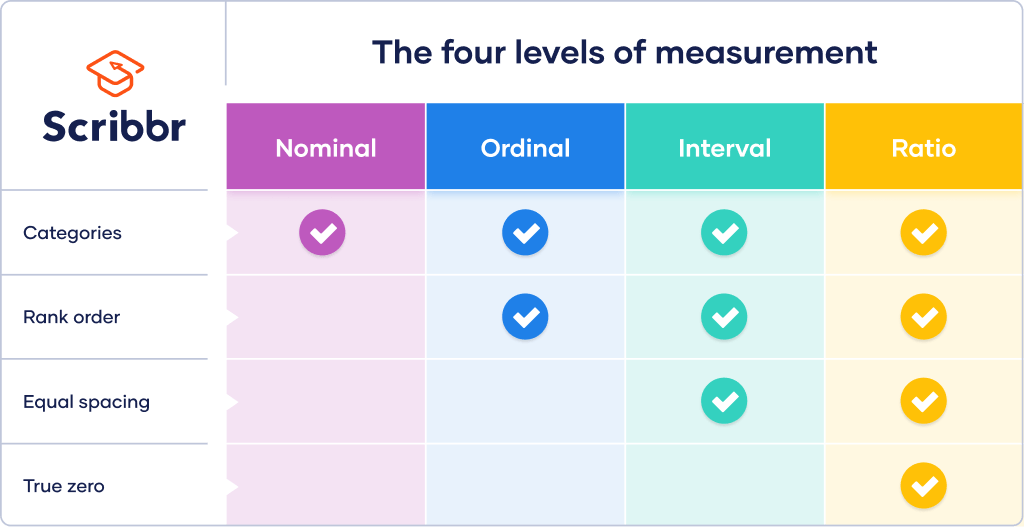Statistics Used to Describe Nominal Data
The simplest measurement scale we can use to label variables is a nominal. Fill in the blank using one of the options below and explain.

Nominal Data Definition Characteristics And Examples Questionpro
Descriptive comes from the word describe and so it typically means to describe something.

. μ 100 μ 100. The Mode of a dataset is the most frequently occurring. This is similar to example 1.
A necessary aspect of working with data is the ability to describe summarize and represent data visually. Descriptive statistics for nominal data. μ 100 μ 100.
Descriptive statistics try to describe the relationship between variables in a sample or population. The most common descriptive statistics that are calculate to summarize nominal or ordinal data are. Since Categorical Data does not lend itself to mathematical calculations by nature there are not many numerical descriptors we can use to describe it.
H 1 H 1. Descriptive statistics provide a summary of data in the form of mean median and mode. Nominal Ordinal Interval Ratio.
Coined from the Latin nomenclature Nomen meaning name this data type is a subcategory of categorical data. There are actually four different data measurement scales that are used to categorize different types of data. An example of ordinal data is rating happiness on a scale of 1-10.
H 0 H 0. This scale is the simplest of. Ordinal data is data which is placed into some kind of order or scale.
In this post we define each measurement scale and provide examples of variables that can be used with each scale. This type of data uses unordered named variables rather than ordered or strictly numerical ones to collect and visualize information. The term descriptive statistics refers to the analysis summary and presentation of findings related to a data set derived from a sample or entire population.
This is a type of data used to name variables without providing any numerical value. A data set is a collection of responses or observations from a sample or entire population. This differs from the other types of data measurements in statistics which are ordinal data interval data and ratio data because these types use quantitative or numerical.
Inferential statistics use a random sample of data taken from a population to describe and make inferences about the whole population. The average of the draws is 31. Two useful descriptive statistics for nominal data are.
One hundred draws are made at random with replacement from a box. Nominal data is sometimes called labelled or named data. It is valuable when it is not possible to examine each.
How do you compare nominal data. Use the chi-square test of goodness-of-fit when you have one nominal variable with two or more values. You compare the observed counts of observations in each category with the.
In the era of big data and artificial intelligence data science and machine learning have become essential in many fields of science and technology. Again this is easy to remember because ordinal sounds like order. Does descriptive statistics use nominal data.
One is a dimension of central tendency which is basically the mean value of stronger effect in the data. Descriptive statistics summarize and organize characteristics of a data set. Pie charts where each slice represents the proportion of observations of each category are useful for nominal data without ordering while bar charts can be used for ordinal categorical data or for discrete data.
Revised on January 31 2022. Males females on a clinical study Can also be used for Ordinal data. Typical descriptive statistics associated with nominal data are frequencies and percentages.
Nominal Scale also called the categorical variable scale is defined as a scale used for labeling variables into distinct classifications and doesnt involve a quantitative value or order. Descriptive statistics comprises three main categories Frequency Distribution Measures of Central Tendency. Examples of nominal data include name hair colour sex etc.
However as the sample size is 49 and the population standard deviation is known thus the z test in inferential statistics is used. A The expected value for the average of the draws is _____ 31. These descriptive statistics are useful to obtain another review of the data.
In scale data there is no standardised value for the difference from one score to the next. In quantitative research after collecting data the first step of statistical analysis is to describe characteristics. Python statistics libraries are comprehensive popular and widely used tools that will assist you in working with data.
Proportion of men and women in a sample. 1 st Level of Measurement. Number of men and women in a sample Percentages eg.
Descriptive statistical measurements are usedDescriptive statistical measurements are used in medical literature to summarize data or describe the attributes of a set of data Nominal data summarize using i 4 ratesproportions. X x 150 μ μ 100 σ σ 12 n 49. Instead of tables graphs can be used to describe the distributions.
Descriptive analysis relies on running the descriptive statistics for the variables. Central Tendency Central tendency is a descriptive summary of a dataset through a single value that reflects the. Lets take a look at the appropriate descriptive statistics and statistical tests for nominal data.
Descriptive statistics describe or summarize the characteristics of your dataset. However we can describe a categorical distributions typical value with the mode and can also note its level of variability. Descriptive statistics is essentially describing the data through methods such as graphical representations measures of central tendency and measures of variability.
Each variable can be describe on at least two dimensions. Nominal data is one of four ways to measure data in statistics. Histograms must be used for continuous data.
Heres more of the four levels of measurement in research and statistics. Published on July 9 2020 by Pritha Bhandari. Percentage of men and women in a sample saying good or bad Proportions eg.

Nominal Data What Is It And How Can You Use It

No comments for "Statistics Used to Describe Nominal Data"
Post a Comment